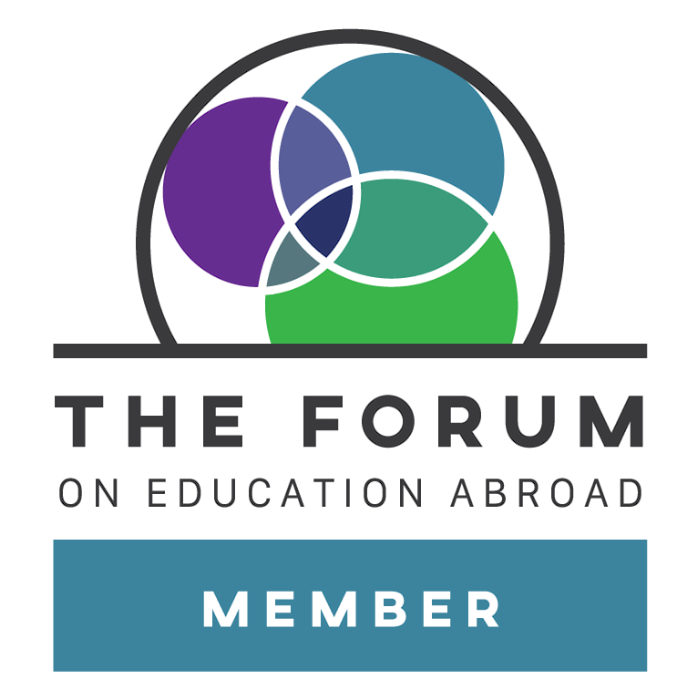In the ever-evolving landscape of higher education, the National Association of Student Personnel Administrators (NASPA) Conference stands as a beacon of collaboration, innovation, and reflection. Professionals dedicated to student affairs and development gather from across the globe, setting the stage for a dynamic exchange of ideas, best practices, and transformative insights.
We had the opportunity to sit down with Dr. Grahaeme Hesp, MBA (GH), FIE’s Senior Director of Institutional Relations, to discuss his recent participation in the NASPA Conference. Here, Dr. Hesp shares his experiences, observations, and takeaways from the event, highlighting the significance of NASPA - Student Affairs Administrators in Higher Education in shaping higher education and the practical strategies he discovered.
FIE: What is NASPA?
GH: NASPA is an international organization of over 15,000 professionals involved in higher education grounded in the Student Affairs functional area but looking at student learning and development everywhere across a campus. NASPA encourages an understanding of and respect for diversity, believing in the worth of individuals, and supporting students in their development. This was the annual conference with close to 6,000 attendees.
FIE: What is NASPA for you and why did you attend the Conference?
GH: I believe this is my 25th year as a member of NASPA and I’ve stayed connected and involved over the years even as my job duties changed. I’ve held leadership positions across the organization but also brought back a lot of knowledge to FIE ranging from Title IX and Cleary Act requirements, veteran funding for study abroad, social media usage in higher education, and much more.
FIE: What stood out for you from this year’s Conference?
GH: It was great to see multiple countries represented at this year’s conference. One challenge was that there were roughly 1,200 presenters so many options for sessions (of course overlapping with each other as well!). The conference (and every ed session!) began with a land and labor acknowledgment recognizing indigenous populations and those not historically recognized for helping build our communities and the US as a whole (such as the Chinese in the Pacific Northwest). Some presenters took this further as added their own acknowledgement for their home campuses. Since Ramadan started the opening night of the conference there was also a “breakfast” room each night that I thought was a nice touch.
FIE: Did you bring any ideas back for your current role with FIE?
GH: In the Presidents’ Panel they each repeatedly talked about the importance of transferable (“soft”) skills, even for their students in the hard(er) sciences. This is something we talk about in our International Internship Course but perhaps we need to promote it even more strongly. They also talked about us being stronger when working together and asked, “Who should we be aligning with and where?” This brought to mind the new relationship FIE has with the Sir Cyril Taylor Foundation/AIFS around our annual Student Global Leadership Conference and got me wondering how we emphasize our existing relationships with the likes of The Forum on Education Abroad, and strengthen, and deepen them, and create new ones.
FIE: Anything surprise you?
GH: I attended a session on social media influencers! I never really thought about the use of influencers within higher education and learned that most influencers are what’s known as 'Nano Influencers,' i.e.., having less than 10,000 followers. Indeed, FIE’s Residence Life Supervisors could be viewed as social media influencers! The goal of influencer marketing is not to go viral but rather to add value and not noise to help students make a decision. It was scary to learn Generation Alpha (the next generation – aren’t we still coming to terms with Gen Z?) who are less than 14 years old are already creating content! Apparently, Gen Z students are more likely to search TikTok for information than undertake a Google search (oh, and they’re still not reading any of the emails we send them!).
FIE: Any final thoughts or observations?
GH: There was an interesting session on assessment and communication. I was taken by the fact that we should be viewing assessment as imply storytelling and, as such, it is therefore intertwined with the FIE story. There are so many great things that FIE does and so many amazing stories from our students that demonstrate the value of FIE but we need to do a better job of telling our story. Hopefully as the FIE Marketing Team gets back to full staff we’ll be able to do this.
FIE: Thank you for sharing your reflections with us Dr Hesp!







